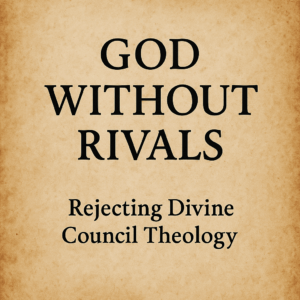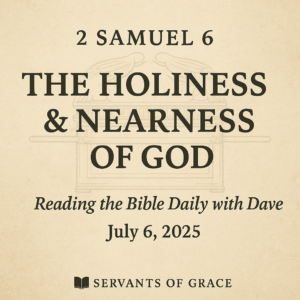⏱️ Estimated Reading Time: 8 min read
The confession that the true God of all creation is triune—Father, Son, and Holy Spirit—is rooted deeply in the soil of Christian theology. And one of the most debated and, at times, perplexing aspects of this confession is the question: “Does Scripture actually teach that Jesus is fully God?”
The early Church experienced numerous fights on this front, as Theodotus, Noetus, Arius, Nestorius, and Eutyches (among others) challenged, in various ways, the full divinity of Jesus Christ. A series of writings and councils spearheaded by a prominent group of early Church fathers, ranging from Athanasius to Cyril of Alexandria, defended the traditional doctrine and ruled the competing teachings as out of bounds. The key doctrines were crystallized in the Nicene Creed (325 A.D.) and Chalcedonian Definition (451 A.D.).
But the debates have not gone away. Outside the Church, Jehovah’s Witnesses and Mormons (Latter-Day Saints) reject the Christian teaching that Jesus is fully divine. For instance, the translation of the Bible used by Jehovah’s Witnesses (New World Translation) famously renders John 1:1, “The Word was a god” (emphasis added), ascribing to Jesus the status of a “god”-like or quasi-angelic being, but nothing more. Furthermore, while the Qur’an affirms some true facts about Jesus—such as His birth to Mary and His role as a prophet—Islam holds that the confession of Jesus as the fully divine Son of God is shirk—that is, the unforgivable sin of ascribing “partners” to Allah (e.g., Qur’an Ali ‘Imran 3:151; Qur’an An-Nisa 4:48). And the acid rain of secularism has, for more than two centuries, eroded all possibility of a divine human altogether, instead holding that this doctrine was invented when Greek-pagan theology was imported into the Church.
Even within the Church, Jesus is often taken to be an “ideal human” at best, or perhaps simply a good teacher—especially within mainline denominations. But many evangelical Christians are confused or inconsistent as well. A 2018 survey by Ligonier Ministries and Lifeway Research found that nearly 95 percent of self-described evangelical Christians affirm the Trinity, but simultaneously, about 80 percent believe that Jesus Christ is the “first and greatest being created by God.”1 The shocking thing is that these respondents do not appear to realize the stark contradiction in these two positions. There is thus a clear need for fresh teaching on Christology (i.e., the doctrine of the person and work of Jesus). It could take many shapes: retrieving the teachings of Athanasius, deconstructing ancient and modern heresies, summarizing the orthodox teaching from the angle of historical or modern systematic theology, or even sorting out the complexities of Karl Barth.
Each of these paths would be fruitful, but instead, I aim to do something even more basic. I want not only to affirm that, yes, Scripture does indeed teach that Jesus Christ is fully God, while also to helping the average Christian understand how it does so. It is one thing to know the “right” answer; it is another thing altogether to understand how the New Testament authors get there—to show their work, so to speak.
Such an endeavor is by no means new. Numerous scholars—particularly among the members of the self-described “early high Christology club” (Richard Bauckham, Martin Hengel, Larry Hurtado, and others)—have recently explored these issues; not just in the creeds and church fathers, but in the pages of Scripture itself. But, the vast majority of their work has focused on one aspect of the issue, or one subset of writings (such as Paul’s letters), and their output has been largely confined to scholarly monographs and articles. It is high time for the findings to be set forth in a way that reaches a broader audience.2
In short, I am arguing that the full Trinitarian Christology that is bedrock to Christianity is found throughout the New Testament, from the earliest days, is derived from the teachings of Jesus Himself and rooted in the Old Testament. Put differently, my aim is to help discern how the concepts that later coalesce in the creeds are right there in the pages of Scripture from the outset of the Christian Church.
But First: The Humanity of the Son
In view of all this, many Christians are surprised to find out that the early Church spent just as much time debating whether Jesus Christ was fully human, which is rarely a real debate today, as it did debating whether He was fully divine.3 If the Nicene Creed majors on the question of Jesus’ full divinity (“Son of God, begotten of the Father before all worlds…very God of very God”), the Chalcedonian Definition majors on His humanity.4 It affirms that Jesus is “the same perfect in deity and the same perfect in humanity, the same truly God and truly man…acknowledged in two natures, unconfusedly, unchangeably, indivisibly, inseparably.”5
It would be a mistake, thus, to press on in discussing the divinity of Jesus without making clear that the Church has historically taught that the two natures—divine and human—cannot be fully separated. Yet the two are also distinguishable in various ways (“unconfusedly”, per Chalcedon), and there is value in understanding Scripture’s teaching on both. It would take an entire book to iron out the physics of how Jesus Christ is fully human and fully divine at the same time. Here I simply survey the New Testament’s key affirmations of His humanity before turning the bulk of attention to His divinity.
First, several passages assert that Jesus is human in the fullest possible sense and not just a visible apparition of a deity or angel. Matthew 1:16, Luke 2:6-7, and Galatians 4:4 state that Jesus was “born” or “begotten” of a woman. Similarly, John 1:14, 1st Timothy 3:16, and Hebrews 2:14 affirm that Jesus “became”, was “manifested in”, and “share[d] in” the same kind of “flesh” (Greek: sarx) that all humans possess. Throughout the Gospels, Jesus eats, walks, sweats, shows emotion, sleeps, and so forth.
Even—or perhaps especially—after Jesus’s resurrection, the Gospel writers go to great lengths to reiterate that His resurrected body is still a fully human—though transformed—body, as seen in John 20:27 (Thomas touches Jesus’s scars) and Luke 24:42-43 (Jesus eats a fish). The apostle John emphasizes that he has “seen” and “touched” Jesus (1st John 1:1) and declares that anyone who denies “the coming of Jesus Christ in the flesh” is a deceiver and “antichrist” (2nd John 7). Indeed, the full humanity of Jesus is a line in the sand, separating true Christianity from unbelief.
Second, the New Testament draws attention to the ways in which Jesus’ humanity is not only a fact but is central to His accomplishing God’s redemptive plan. His humanity is essential to His fulfillment of everything expected of the human Messiah, or deliverer. I will catalog but a few. Jesus is:
• The eschatological prophet like Moses (Acts 3:22)
• A priest in the order of Melchizedek (Hebrews 5:10)
• The King like David (Matthew 21:9; Romans 1:3), who is born from his line (Matthew 1:1-18).
• The anointed one, or Messiah/Christ (Luke 2:11; 9:20; John 20:31).
• The second and greater Adam (Romans 5:14; 1st Corinthians 15:45).
• The servant who would suffer and die vicariously (Acts 8:32-33; 1st Peter 2:22-23).
• The “root” of Jesse and “star” of Jacob (Revelation 5:5; 22:16, echoing Isaiah 11:1 and Numbers 24:17).
• The Shepherd of the flock of Israel (John 10:14; Hebrews 13:20).
Each is grounded in Old Covenant promises and comes to fruition in Christ. None of these, strictly speaking, require fulfillment by a fully divine person, but they do, often quite explicitly, envision a human fulfillment (e.g., shedding of blood, keeping the law in place of Adam). Consequently, these passages highlight how Jesus Christ accomplishes salvation specifically as a human mediator (1st Timothy 2:5). Without His full human nature, there is no redemption of humans.
So, how does the New Testament go further and teach that Jesus is specifically a divine messianic deliverer? How is He not only a human prophet, priest, king, and mediator, but more than that—fully God? The shocking “reveal” of the New Testament that Jesus is not just the Messiah, but more than a Messiah.6
References:
1. See “The State of Theology,” Ligonier Ministries and LifeWay Research, accessed October 28, 2019, www.thestateoftheology.com.
2. Larry W. Hurtado has taken this step in summarizing thirty years of research on early-church worship patterns in his Honoring the Son: Jesus in Earliest Christian Devotional Practice(Bellingham, WA: Lexham, 2018).
3. The Docetism controversy—asserting that Jesus only appeared human—arose with Serapion (among others) and was refuted in the ecumenical councils.
4. Trinity Psalter Hymnal (Willow Grove, PA: Trinity Psalter Hymnal Joint Venture, 2018), 852.
5. Author’s own translation from the Greek provided in Jaroslav Pelikan and Valerie Hotchkiss, Creeds and Confessions of Faith in the Christian Tradition, vol. 1, Early Eastern and Medieval (New Haven, CT: Yale University Press, 2003), 180.
6. To borrow language from Andrew Chester, “The Christ of Paul,” in Redemption and Resistance: The Messianic Hopes of Jews and Christians in Antiquity, ed. Markus Bockmuehl and James Carleton Paget (London: T&T Clark, 2007), 121.
Greg Lanier (PhD, University of Cambridge) is associate professor of New Testament at Reformed Theological Seminary in Orlando, Florida. He also serves as associate pastor of River Oaks Church (PCA). He has published multiple books and scholarly articles on early Christology, the Gospels, the Septuagint, and other topics. Greg and his wife, Kate, live in Florida with their three daughters.




